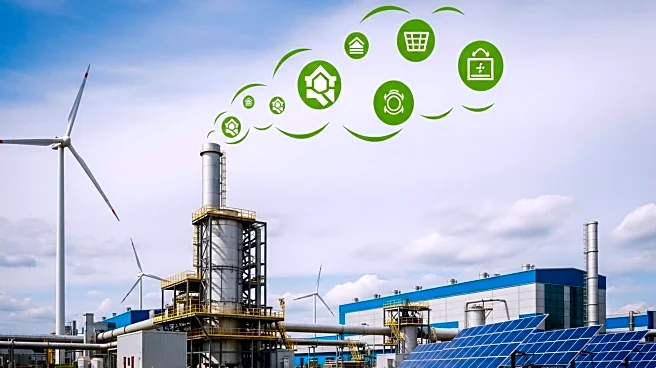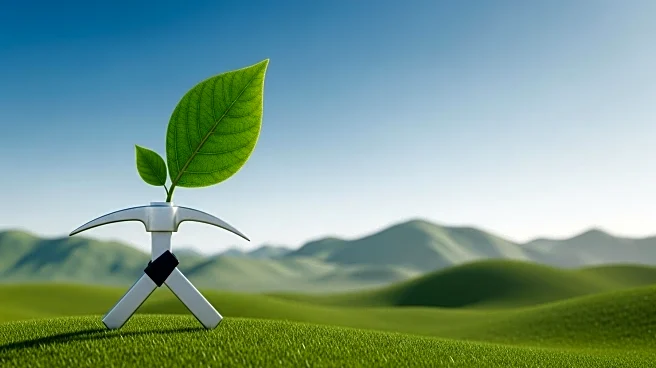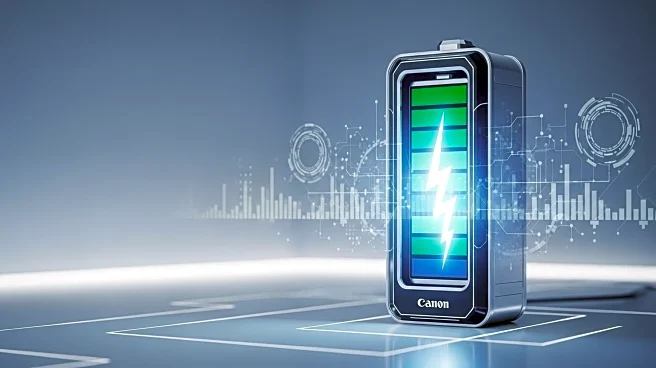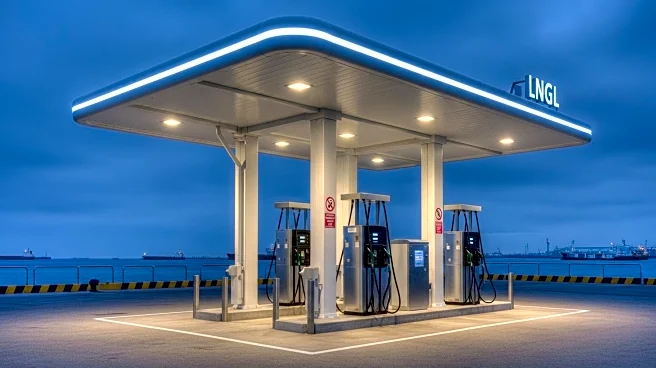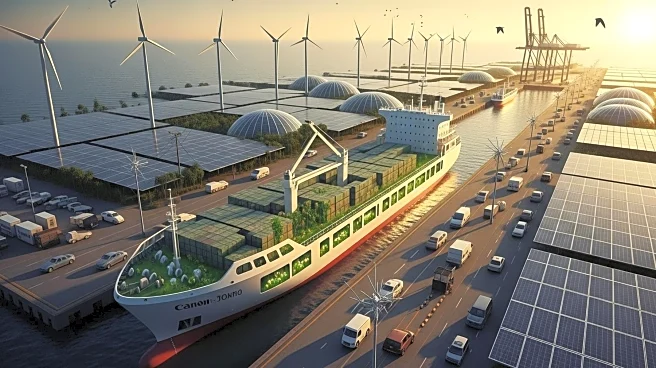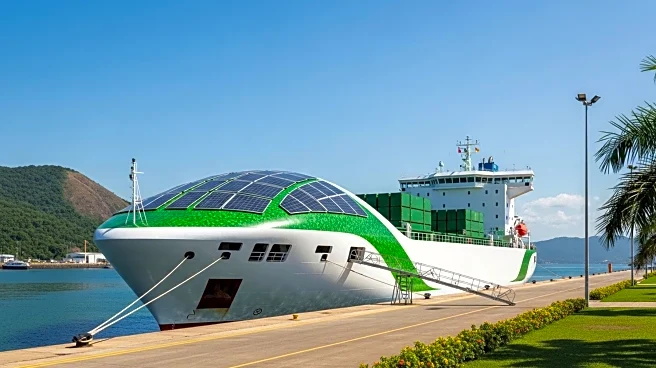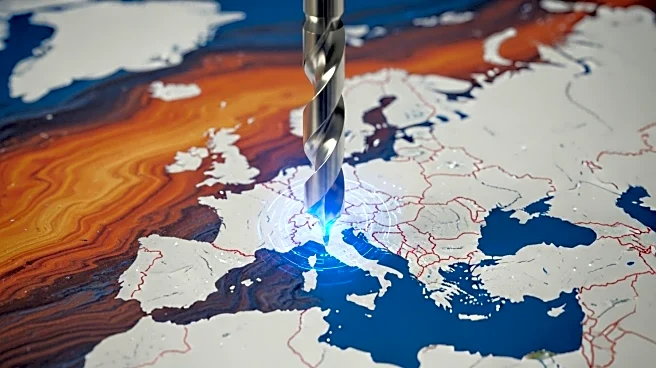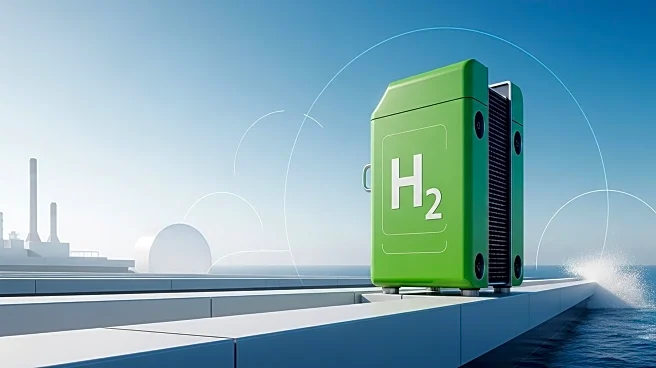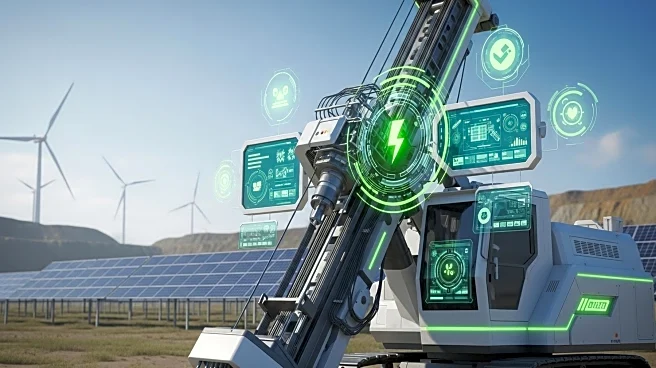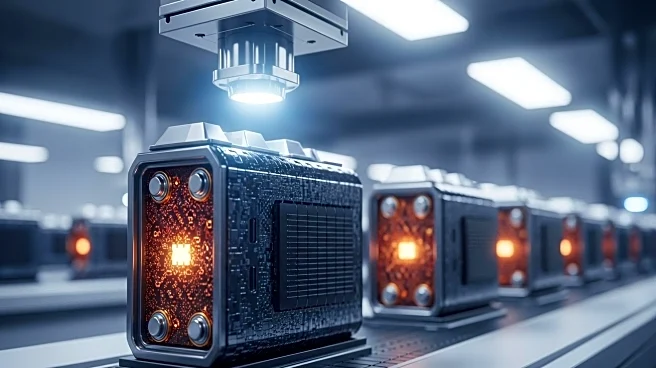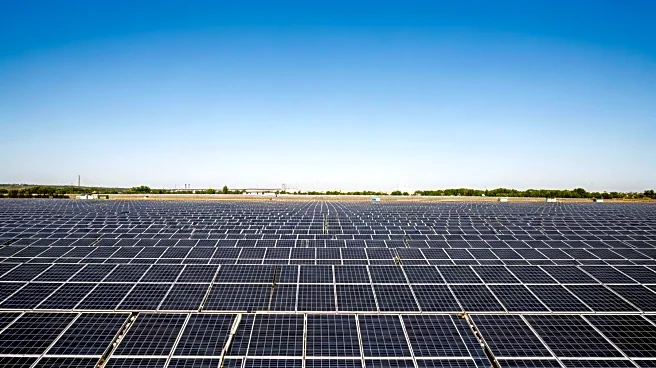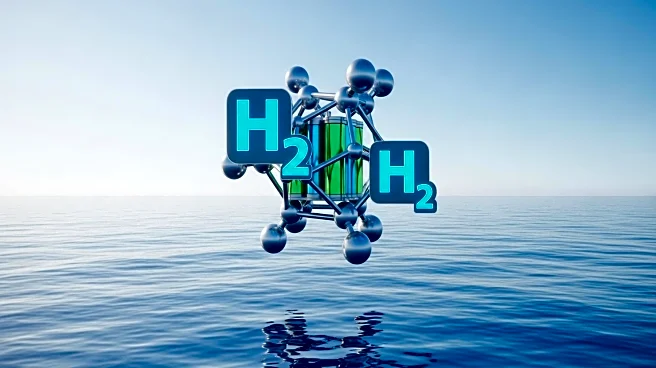What is the story about?
What's Happening?
The European Union Emissions Trading System (EU ETS) has undergone revisions that will subsidize the production of low-emission intermediate products used in hydrogen-based steelmaking processes from 2026 to 2033. These changes include updated benchmark definitions for sintered ore, hot metal, and hydrogen, allowing free allocation of EU Allowances (EUAs) for the production of pellets, direct reduced iron (DRI), and green hydrogen. This revision aims to incentivize the transition to low-emission steel production methods, such as the hydrogen-based direct reduced iron-electric arc furnace (H2-DRI-EAF) route, which is expected to become more competitive compared to traditional blast furnace-basic oxygen furnace (BF-BOF) methods. The EU ETS revisions are part of broader efforts to decarbonize the steel industry and align with the EU's climate goals.
Why It's Important?
The revisions to the EU ETS are significant as they reshape the competitive landscape of the steel industry within the EU. By subsidizing low-emission steel production methods, the EU is encouraging a shift towards greener technologies, which could lead to reduced carbon emissions from one of the most emission-intensive industries. This move is crucial for meeting the EU's climate targets and reducing the carbon footprint of steel production. The changes also have implications for global trade, as the EU's Carbon Border Adjustment Mechanism (CBAM) will affect the competitiveness of steel imports based on their emission intensity. Countries that can produce low-emission steel will have a competitive advantage in exporting to the EU, potentially leading to a decarbonization race among global steel producers.
What's Next?
As the EU ETS revisions take effect, steel producers within the EU will need to adapt to the new competitive dynamics. Companies may invest in upgrading their facilities to adopt low-emission technologies like H2-DRI-EAF to benefit from the free allocation of EUAs. Additionally, the phase-out of free allocation for high-emission production methods will increase the pressure on traditional steelmaking routes to reduce emissions or face higher costs. The EU's CBAM will gradually phase in, further influencing trade patterns and encouraging decarbonization efforts globally. Stakeholders in the steel industry, including policymakers and businesses, will need to navigate these changes to maintain competitiveness and align with environmental goals.
Beyond the Headlines
The EU ETS revisions highlight the ethical and environmental dimensions of industrial decarbonization. By incentivizing low-emission technologies, the EU is taking a proactive stance in addressing climate change and promoting sustainable practices. This shift may also lead to long-term changes in the global steel market, as countries with access to affordable renewable energy and low-emission technologies gain a competitive edge. The transition to greener steel production methods could also spur innovation and investment in renewable energy infrastructure, further supporting the EU's climate objectives.
AI Generated Content
Do you find this article useful?
